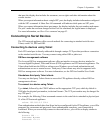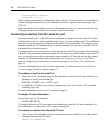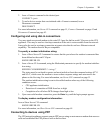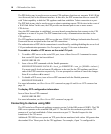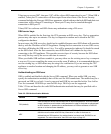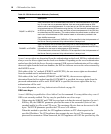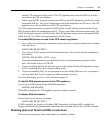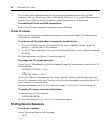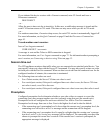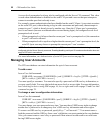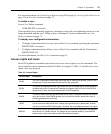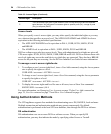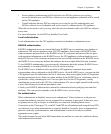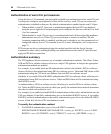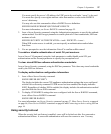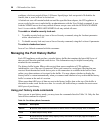
Chapter 3: Operations 21
If you initiated the device session with a Connect command, enter CLI mode and issue a
Disconnect command.
DISCONNECT
- or -
Allow the port to time-out due to inactivity. In this case, a notification message is issued and the
serial CLI session returns to CLI mode. This time-out may occur while you are in CLI mode.
- or -
For modem connections, if a carrier drop occurs, the serial CLI session is automatically logged off.
For more information, see the Quit Command on page 50 and the Disconnect Command on
page 43.
To end another user’s session:
Issue a User Logout command.
USER LOGOUT <username>
A message is sent and the Telnet or SSH connection is dropped.
For more information, see User Logout command on page 72. For information about preempting a
user’s session, see Connecting to devices using Telnet on page 13.
Session time-out
The CPS appliance monitors data traffic when you are connected to an attached serial device. You
may specify a time-out value with the Server CLI command. You may also specify a time-out value
for each port with the Port Set command. When no data is received from the connected user for the
configured number of minutes, the connection is terminated.
The following time-out values are used:
• For a Telnet session, the Server CLI time-out value is used.
• For a serial port session, if the port’s configured time-out value is zero, the Server CLI time-
out value is used, even if it is also zero.
• For a serial port session, if the port’s configured time-out value is non-zero, that value is used.
Preemption
Configured preemption levels determine whether a user who wishes to connect to a port (the
connecting user) may preempt another user who is already using that port (the current user).
Preemption levels are configured for each user with the User Add or User Set commands.
Preemption levels range from one to four. Four is the highest level and is also the default.
• If the connecting user’s preemption level is lower than the current user’s preemption level, the
connecting user will receive an In Use message and the connection will be dropped.
• If the connecting user’s preemption level is equal to or higher than the owning user’s preemp-
tion level, an In Use by owning user message will be displayed. The connecting user may then
choose to preempt the current user’s session. If the current user’s session is preempted, an
appropriate message is displayed.



